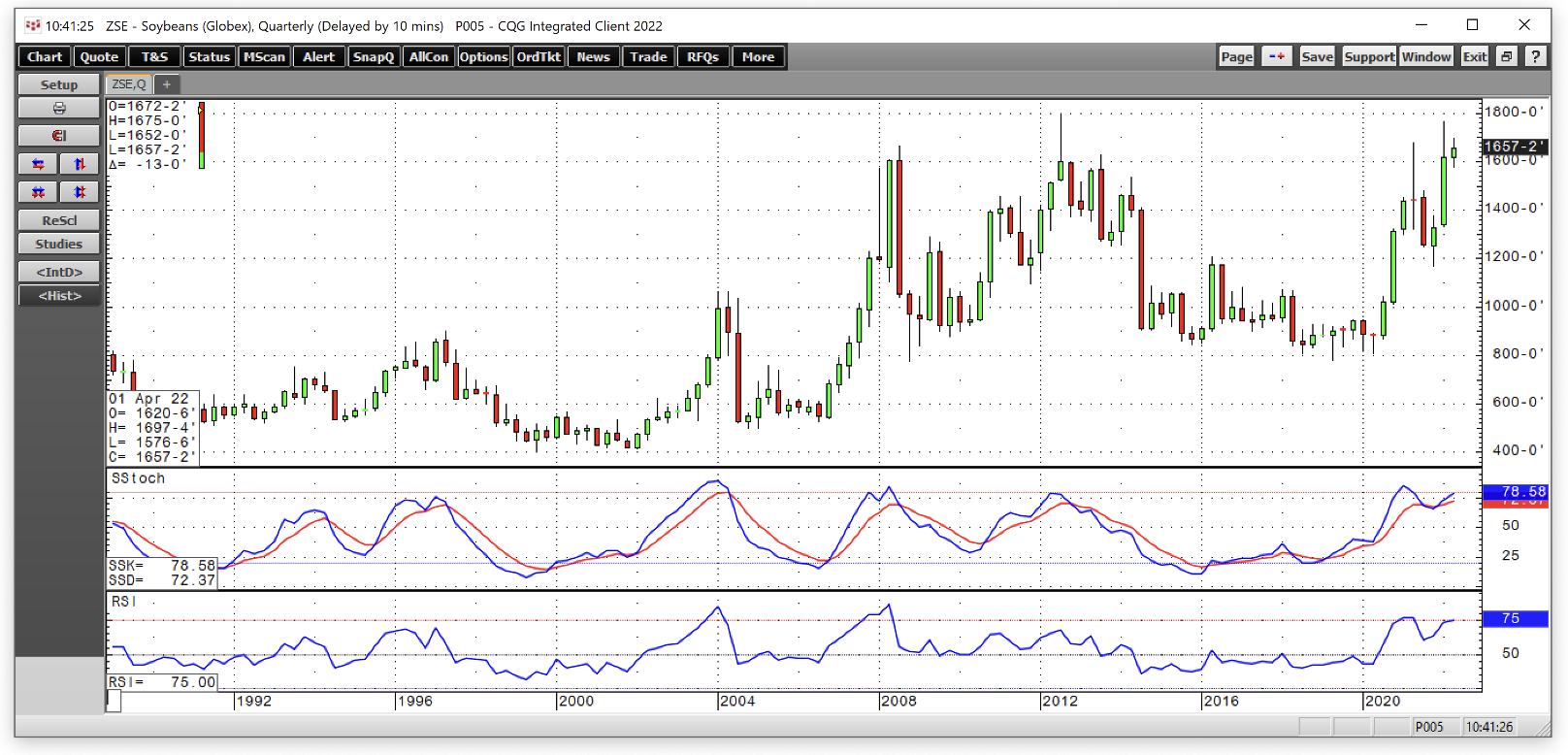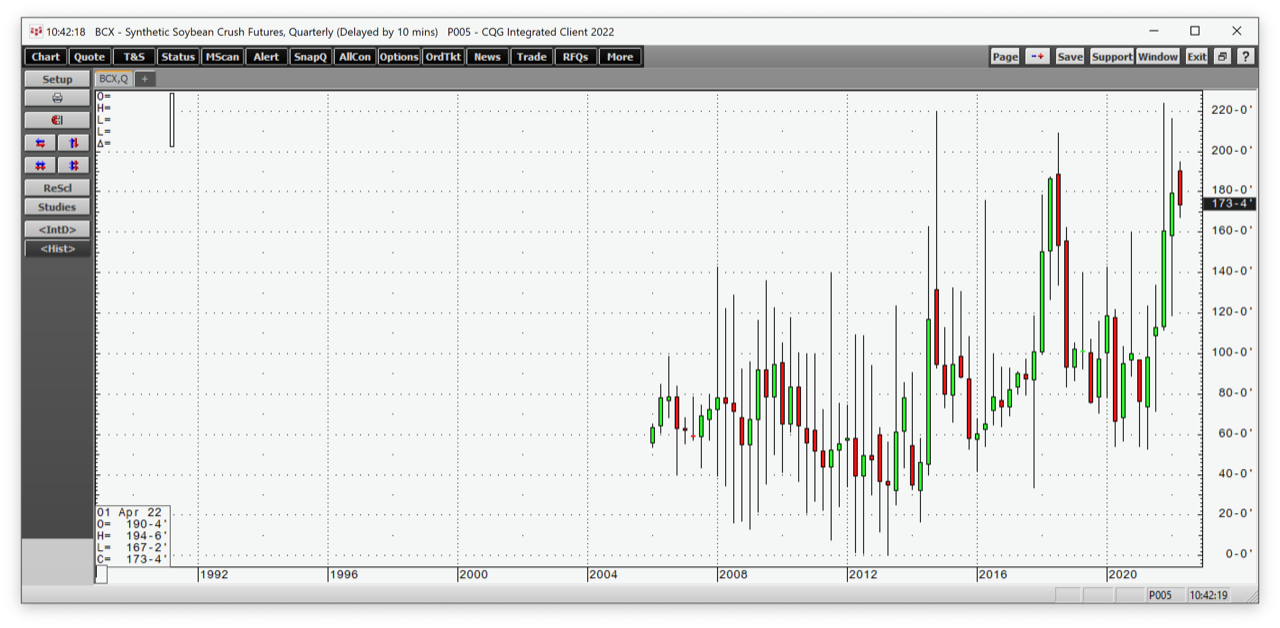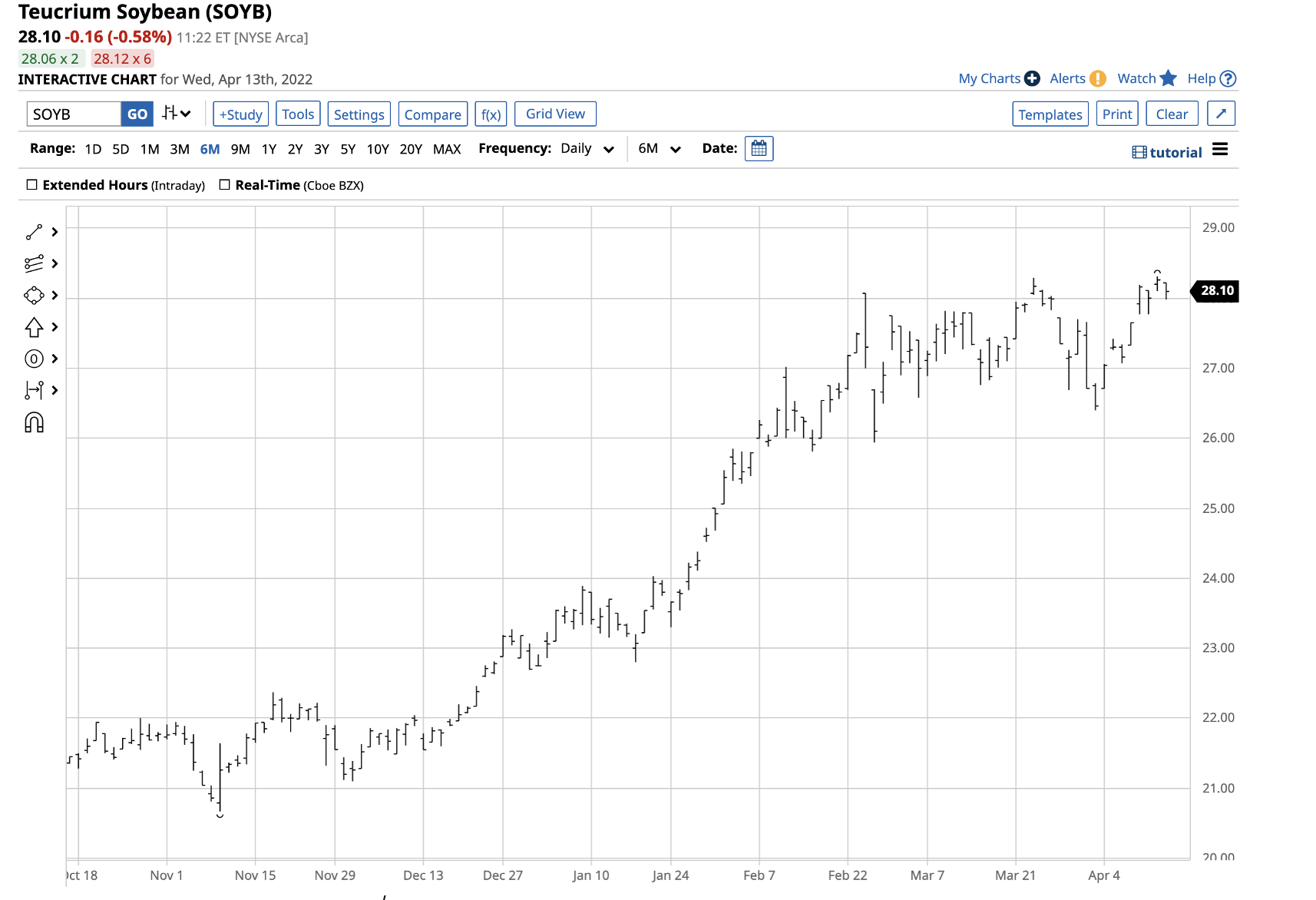This article was written exclusively for Investing.com
- Soybeans near record high in Q1
- Used for food and fuel
- Beans priced in teens only became a reality in 2008
- 3 reasons next move could be to the upside
- SOYB is the soybean ETF product
In early April 2022, farmers in the Northern Hemisphere are planting seeds that will feed and fuel the world after the fall harvest. Population growth at around 20 million per quarter means each year, the world depends on increasing agricultural product supplies.
With more mouths to feed, soybean requirements will increase in 2022 and beyond as demand continues to grow.
However, 2022 is not an ordinary year. Raging inflationary pressures, the first war in Europe since World War II and supply-chain bottlenecks have pushed all raw material prices higher. And soybeans are no exception. Soybeans and soybean products—oil and meal—trade in the futures and futures options market on the CME’s CBOT division. The Teucrium Soybean ETF (NYSE:SOYB) product tracks the price action of a portfolio of soybean futures contracts.
The trend and fundamental shifts in the agricultural markets suggest that the next time beans move out of the teens, it could be to the upside.
Beans Near Record High In Q1
The all-time high in the soybean futures market came in 2012, when the price reached $17.9475 per bushel.

Source: CQG
As the quarterly chart highlights, nearby CBOT soybean futures reached $17.65 per bushel in Q1 2022, only 29.75 cents per bushel less than the 2012 peak. Quarterly price momentum and relative strength indicators were rising at the end of last week, with the price above the $16.70 level.
In Q1, soybean futures posted a 21.79% gain, closing on Mar. 31 at $16.1825 per bushel. They were higher in mid-April during the 2022 planting season in the US, the world’s leading producer and exporter of the oilseeds. Over the past months, a weak South American crop has supported prices and pushed soybeans to an 11-year high in Q1 2022.
Soybeans Provide Food And Fuel
Processors crush soybeans into two products, soybean meal and soybean oil. The meal is a critical ingredient in animal feeds, while the oil is used for cooking and is an essential ingredient in biodiesel fuel.
The crush spread measures soybeans against soybean product prices.

Source: CQG
The chart of the soybean crush spread shows at $1.7350; the processing spread is at an elevated level. Soybean meal and oil prices have outperformed the raw oilseed, a sign of rising demand.
Beans Priced In Teens Only Became A Reality In 2008
In 1973, soybean futures rose to $12.90 per bushel as the demand outstripped the supplies. The move to nearly $13 caused soybean traders to begin a multi-decade chant about beans in the teens.

Source: CQG
The annual chart shows that it took 3.5 decades for beans to finally reach the teens. In 2008, the price rose above the $13 level on its way to a record high of nearly $18 per bushel in 2012.
In 2022, beans have not traded below $13 and remain in the teens, at the $16.70 per bushel level.
3 Reasons Next Move Could Be To The Upside
The next time soybean futures move out of the teens, they could be looking down at the $19 level as they hit more than $20 per bushel. Three factors point to beans out of the teens to the upside over the coming months and years:
- The price trend is higher, and the trend is always your best friend.
- Inflation continues to rise. Last week, the March Consumer Price Index came in at 8.5%, with core inflation at 6.5%, the highest levels in more than four decades. Rising inflation increases the cost of producing each soybean bushel and is pushing the oilseed’s price higher.
- Skyrocketing energy prices, with crude oil at over the $100-per-barrel level and natural gas over $7 per MMBtu, increase the demand for biodiesel fuel. Higher biodiesel demand puts additional upward pressure on soybean prices.
Meanwhile, the war in Ukraine is pushing wheat and corn prices higher, as Ukraine and Russia are leading suppliers. The fertile Ukrainian plains are battlefields, and the Black Sea ports are a war zone in 2022. The potential for grain and oilseed shortages is at the highest level in decades, if not ever, and soybean prices tend to move with corn and wheat prices.
SOYB Is The Soybean ETF Product
The most direct route for a risk position in the soybean market is via the futures and futures options that trade on the CME’s CBOT division. The Teucrium Soybean ETF provides an alternative for market participants looking to ride soybean prices higher.
At $28.10 per share at the end of last week, SOYB had more than $68.5 million in assets under management. The ETF trades an average of 96,840 shares each day and charges a 1.88% expense ratio. SOYB holds a portfolio of three actively traded soybean futures contracts to minimize the risk during roll periods when one active month expires, and the next takes over. The nearby contracts tend to experience the most price volatility, so SOYB tends to underperform nearby soybean futures on the upside and outperform when the price corrects.
May soybean futures rose from $15.7675 on Apr. 4 to a high of $16.9750 on Apr. 11, or 7.66%.

Source: Barchart
Over the same period, the SOYB ETF rose from $26.40 to $28.31 per share, or 7.23%.
Soybeans continue to trend high during the 2022 planting season in the Northern Hemisphere. The next time beans are out of the teens, they could be looking down at that level instead of up.
